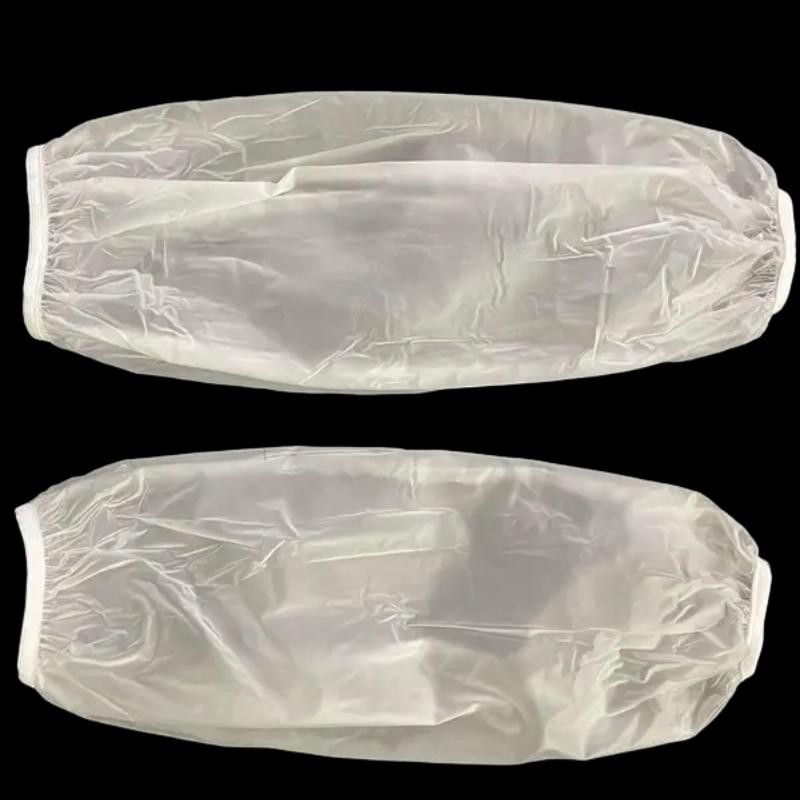Oct . 19, 2025 13:25 Back to list
PVC/PEVA Sleeves – Waterproof, Durable PPE for Workshops
A Field Note on Practical Protection: PVC/PEVA Sleeves
I’ve visited more workshops than I can count—paint lines that hum at 2 a.m., labs that smell faintly of solvents, and beauty rooms where disinfectants are as common as coffee. One constant? People want dry, clean, protected forearms without fuss. That’s where PVC/PEVA Sleeves quietly win the day. Not glamorous, but crucial.

What’s driving demand right now
- Splash control rules are tighter (especially around disinfectants and mild acids).
- People prefer wipe-clean, low-lint gear—less laundry, fewer fibers.
- Procurement teams ask for traceable materials, RoHS/REACH compliance, and simple sizing. Honestly, they also want stock that doesn’t rip on day two.
Material notes (from the floor, not the brochure)
PVC gives a slightly stiffer drape and robust splash resistance; PEVA is lighter, softer, and often chosen for odor-sensitive areas. Both handle routine cleaners well. In fact, many customers say PEVA “just feels nicer” during long shifts, while PVC takes more abrasion without complaint.
Product specifications (typical, real-world may vary)
| Parameter | PVC Sleeve | PEVA Sleeve |
|---|---|---|
| Film thickness | ≈ 0.15–0.25 mm | ≈ 0.12–0.20 mm |
| Tensile strength (ASTM D882) | ≈ 22–28 MPa | ≈ 18–24 MPa |
| Seam method | HF/heat weld | Heat weld |
| Chemical splash (EN 374, screening) | Good for mild acids/alkalis | Good; lighter weight |
| Cuffs | Elastic double-hem | Elastic double-hem |
Where they’re used (and why)
- Factories: paint, plating, food prep lines—splash protection and hygiene.
- Laboratories and hospitals: disinfectants, low-level biofluids splash control; low-lint.
- Beauty salons: dyes, developers, disinfecting routines; comfort matters.
- Cleaning services: bleach or quats—people keep sleeves by the bucket.
How these sleeves are actually made
Materials: PVC film or PEVA film, elastic, optional logo inks (REACH-compliant). Methods: film slitting → die cutting → HF/heat welding seams → elastic insertion → edge trimming → QC. Testing: tensile and elongation (ASTM D882), hydrostatic/impact penetration for splash (AATCC 127/42 as screening), seam strength (ASTM D751), chemical splash screening (EN 374 methods) and aging (ISO 188). Service life: around 3–6 months of regular wipe-down use; single-use options available. Shelf life: ≈ 24 months sealed, cool/dry.
Advantages I keep hearing about
- Quick on/off elastic cuffs; no dangling ties.
- Consistent welds—seam leaks are the real enemy.
- Easy to sanitize; less laundry. To be honest, that’s a budget saver.
Customization options
Length 35–45 cm, film thickness, colors (clear/blue/green), logo print, cuff tension, individual polybag or bulk pack. MOQs are friendly for trials.
Vendor landscape (my shorthand)
| Vendor | Material traceability | Certs | Lead time | Notes |
|---|---|---|---|---|
| Helee Garment (Shijiazhuang, Hebei; No. 12 Shuangtong Rd., Dahe Town) | Batch-coded PVC/PEVA film | ISO 9001, REACH, RoHS (reported) | ≈ 15–25 days | Stable weld quality; easy custom runs |
| Vendor A (regional) | Partial, by lot | ISO 9001 | ≈ 25–30 days | Strong on PVC; fewer PEVA options |
| Trading supplier | Varies | Mixed | Depends on factory slot | OK for spot buys; limited QC control |
Field outcomes (two quick cases)
PVC/PEVA Sleeves at an electronics assembly in Suzhou: dermatitis incidents linked to wet sleeves dropped 38% in 90 days; supervisors liked the lighter PEVA in summer. A hospital CSSD in the EU trialed PVC/PEVA Sleeves during high-disinfection shifts; splash-through events went to zero in the pilot, with no lint complaints.
Compliance, testing and data points
- Screening to EN 14126/ISO 16603 for fluid resistance where relevant.
- Chemical splash guidance via EN 374 methods; for strong solvents, confirm ASTM F739 permeation data first.
- Typical hydrostatic (AATCC 127) > 1000 mm H2O on intact film; seams verified separately.
- Manufactured under ISO 9001; materials screened to REACH/RoHS declarations.
Author’s note: If you need audit packs—material SDS, weld parameters, or third-party lab reports—ask early. Lead time breathes easier when compliance is squared away on day one.
Citations
- ISO 16603:2004, Clothing for protection against contact with blood and body fluids.
- EN 14126:2003+A1:2013, Protective clothing against infective agents.
- ASTM D882-18, Standard Test Method for Tensile Properties of Thin Plastic Sheeting.
- ASTM F739-12(2019), Standard Test Method for Permeation of Liquids and Gases through Protective Clothing Materials.
- REACH Regulation (EC) No 1907/2006; RoHS Directive 2011/65/EU.
-
Comprehensive Guide to Post Mortm Kit Factories: Global Impact & Innovations
NewsNov.24,2025
-
Efficient Shroud Kit Pack Factory Solutions for Global Supply Chains
NewsNov.24,2025
-
Leading Shroud Kit Pack Exporter Solutions – Durable & Sustainable Packaging for Global Trade
NewsNov.23,2025
-
Reliable Shroud Kit Pack Manufacturer for Global Packaging Solutions
NewsNov.23,2025
-
Comprehensive Guide to Shroud Kit Pack Supplier: Global Insights & Industry Trends
NewsNov.23,2025
-
Reliable Shroud Kit Pack Suppliers for Global Protection & Logistics
NewsNov.22,2025





